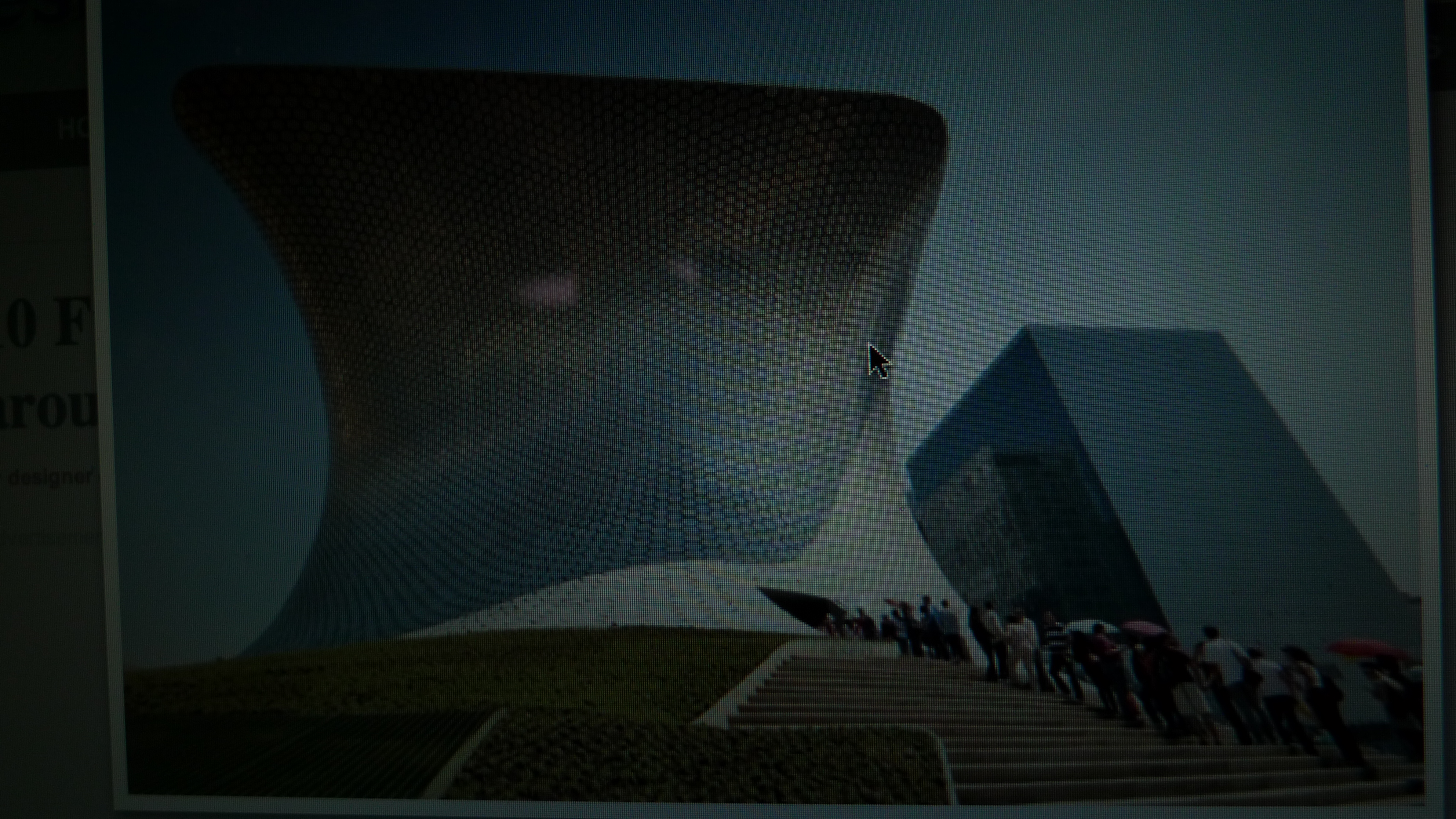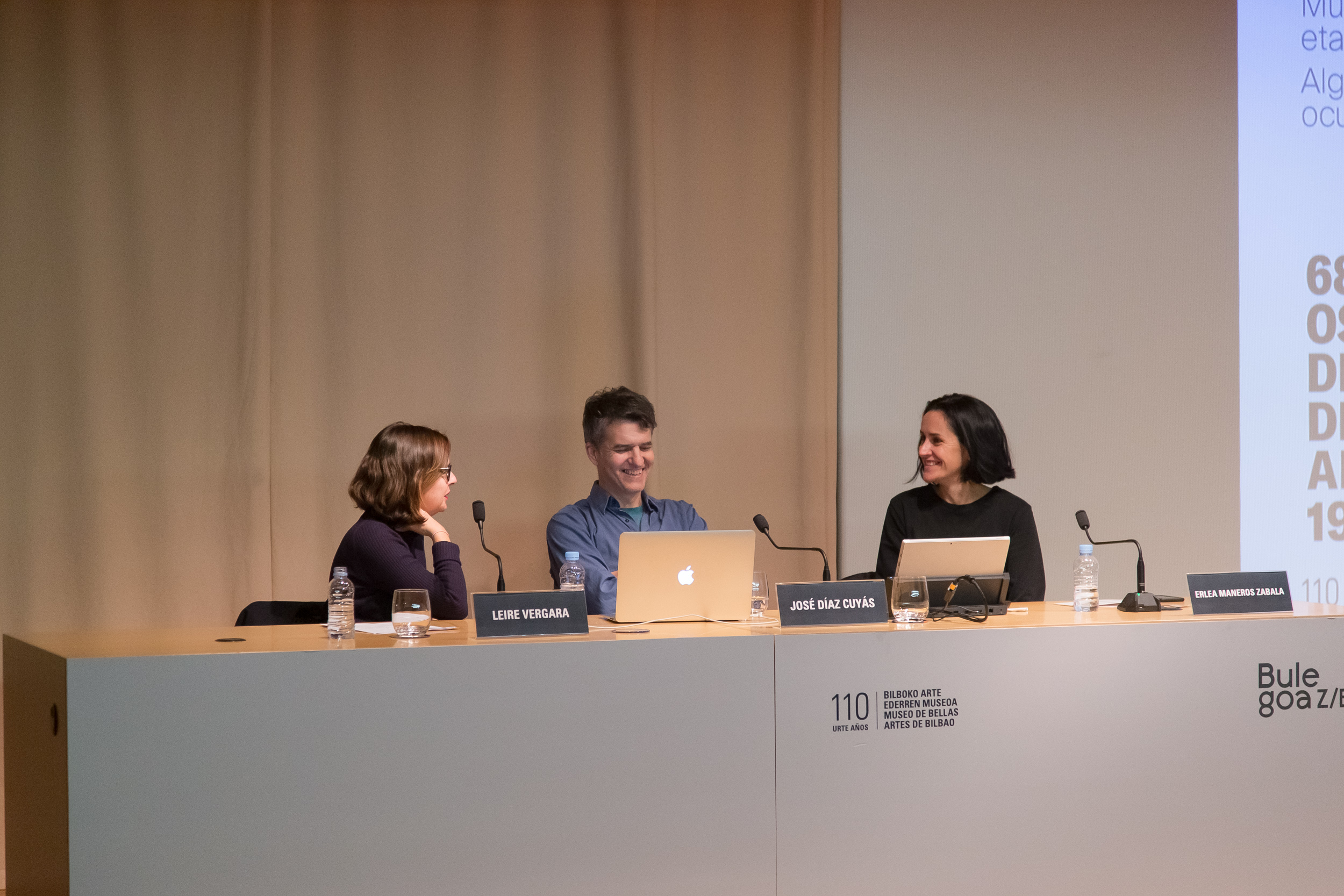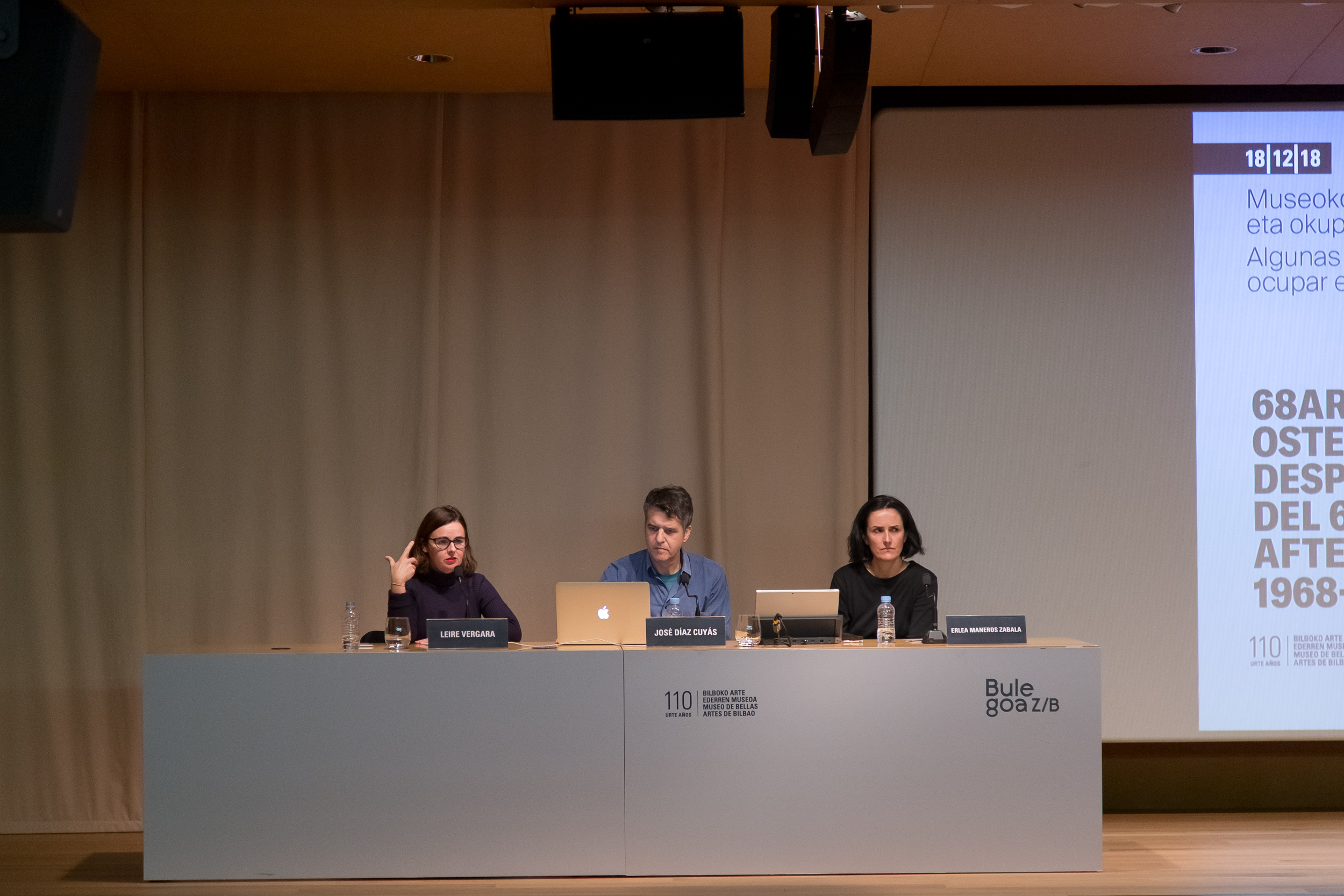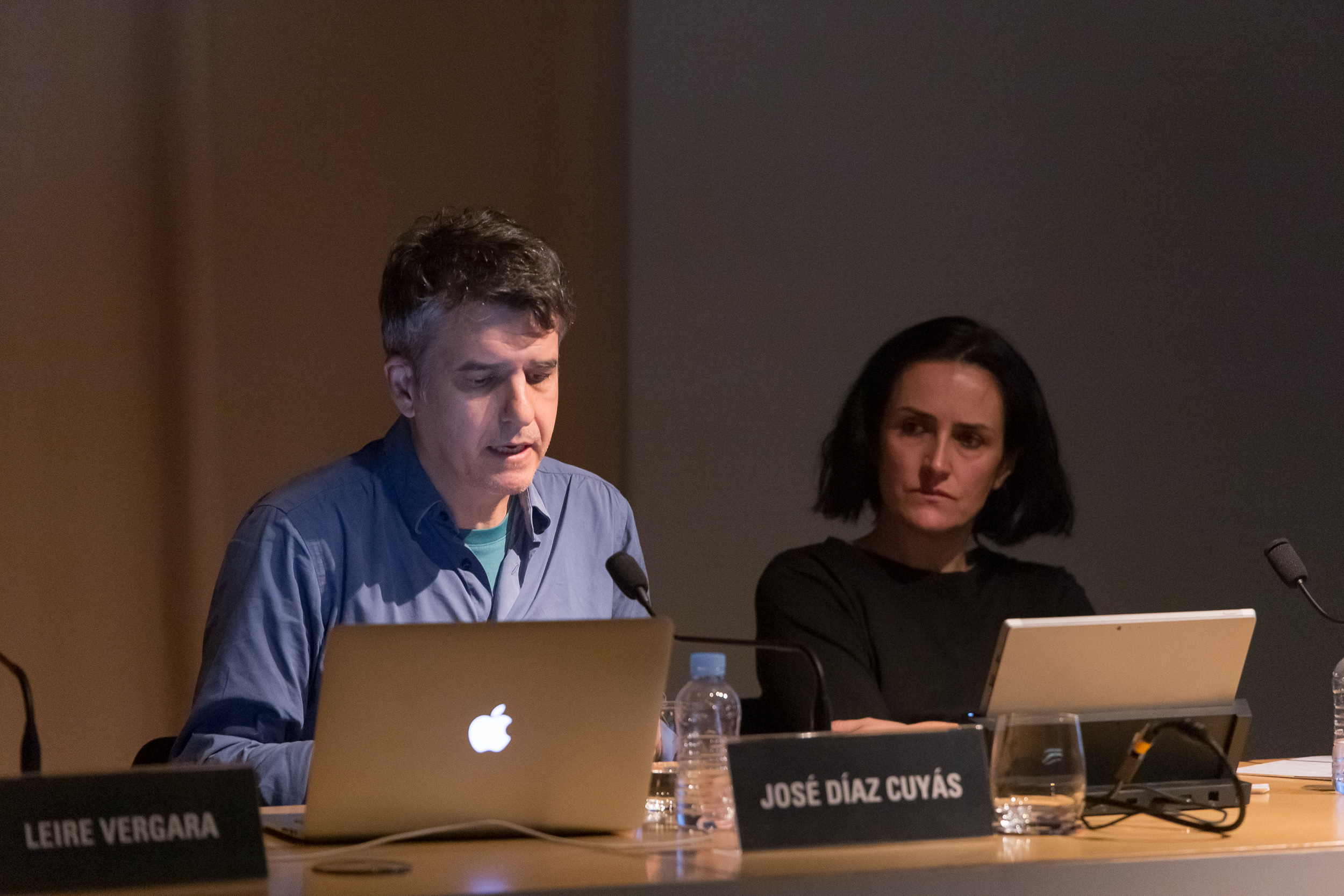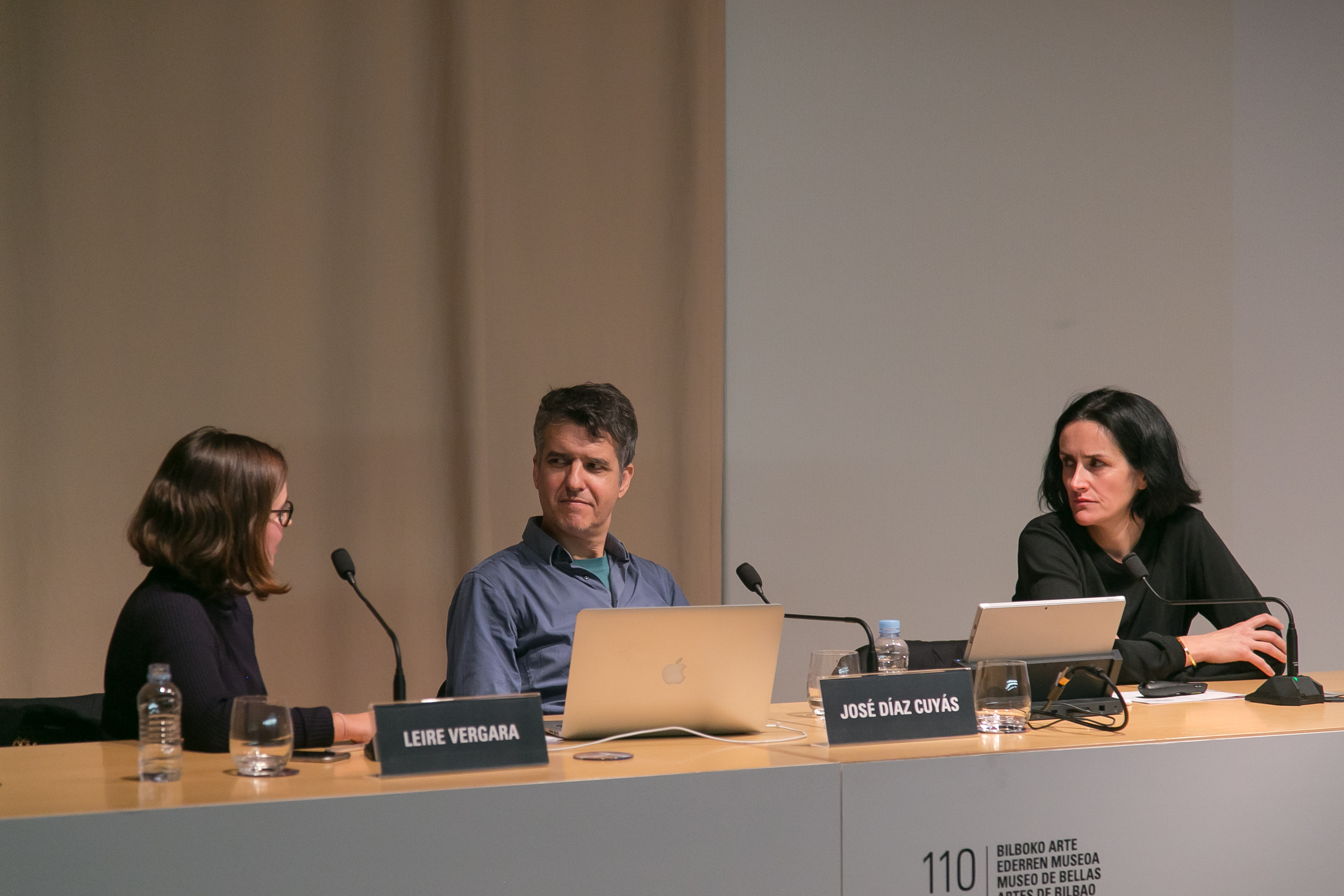Artworks for de-occupying
PILGRIMAGES FOR A NEW ECONOMY. WITH JOSÉ DÍAZ CUYÁS and ERLEA MANEROS ZABALA
by
Encounter around Erlea Maneros Zabala’s Pilgrimages for a New Economy (2007-2012) with the artist and José Díaz Cuyás. The event is part of Artworks for De-Occupying and Occupying Time in the Museum, a series of encounters accompanying the exhibition After 1968. Art and artistic practices in the Basque Country, 1968-2018 at the Bilbao Fine Arts Museum. The encounters are based on seven works, some of which are included in the exhibition while others are part of its conceptual framework. In each encounter, artists and art specialists gather together around an artwork.
The encounters in Artworks for… coalesce around the idea of how to imagine the museum through the objects it holds – the particular museum hosting After 1968, with its specific nature and history; and the museum in general, as an institution that creates a narrative of the present by storing objects from the past for the future.
Venue: Auditorium of the Bilbao Fine Arts Museum.
Time: 7 pm. Entry free of charge, limited seating. Invitations available at the museum box office.
About the artwork
Benedict Anderson, in Imagined Communities (1983) considers the museum as one of the three institutions – along with the census and the map – used by colonial empires, and later by the new colonial states, to imagine their dominions during the nineteenth and twentieth centuries. While the census is a means of representing populations, and maps a manner of imagining territories, museums are an effective instrument with which to legitimise domination of the population and territory by constructing a narrative of a common history.
Today, museums have acquired a different usage. In the neo-liberal order, financial markets have taken the place of the nation-state. The census, map and museum continue to be useful devices, but the uses of them have changed. Mercantile logic has invaded all areas including the production of subjectivity; and museums are now, above all, businesses among others in the global cultural tourist industry.
Pilgrimages for a New Economy (2007-2012) considers the new reality in which the circulation of goods, ideas and people follows a single normative global logic. This photographic series by Erlea Maneros Zabala shows views of some of the museums-as-businesses built of the last fifty years. The success of these modern, architecturally spectacular buildings is based on the extent to which they can become icons and in doing so – as the title indicates – become incorporated into the routes of circulation and consumption of the new economy.
The photographs in the series are taken using downloaded images from Internet photographed directly by the artist as they appear on the computer screen. The screen here is not an invisible interface; its presence is patently visible in the dirt that tends to stick to laptop computers (dust, fingerprints, remnants of saliva, etc.). This layer produces an estrangement through which the hypermodern buildings come to resemble futuristic, anachronistic ruins, remains of imagined communities trapped in a fold in time.
José Díaz Cuyás is an Associate Professor of aesthetic and contemporary art at the Department of Fine Arts, University of La Laguna, Spain. His research is focused on the body as mediator of artistic and visual experience, and on the theoretical and practical consequences of the Sixties’ avant-gardes. His last publications are the Concreta nº10 about art and tourism, and “Movilizados por lo real: turistas, soldados, artistas” (about Marcel Broodthaers) in Arquitectura: lenguajes fílmicos, Tabakalera, 2018. He was director of Acto magazine, with special issues about Duchamp, Ground, Laugh and Fantoms (http://www.revista-acto.net/). Nowadays is coordinator of the research group TURICOM, The Touristic experience: Image, Body and Death in the leisure culture. (http://turicom.es/).
Erlea Maneros Zabala (Bilbao, 1977) is an artist. She studied at the Glasgow School of Art and California Institute of the Arts, she lives and works in Joshua Tree, California. Her work has been exhibited in institutions such as Museo National Centro de Arte Reina Sofia (Madrid), Museo Experimental El Eco (Mexico City), REDCAT (Los Angeles), Guggenheim Museum (Bilbao), CAPC Musée d’Art Contemporain (Bordeaux) and Bombas Gens Centre d’Art (Valencia) among others.
Artworks for De-occupying and Occupying Time in the Museum is a collaborative project between Bulegoa z/b and the Bilbao Fine Arts Museum.
